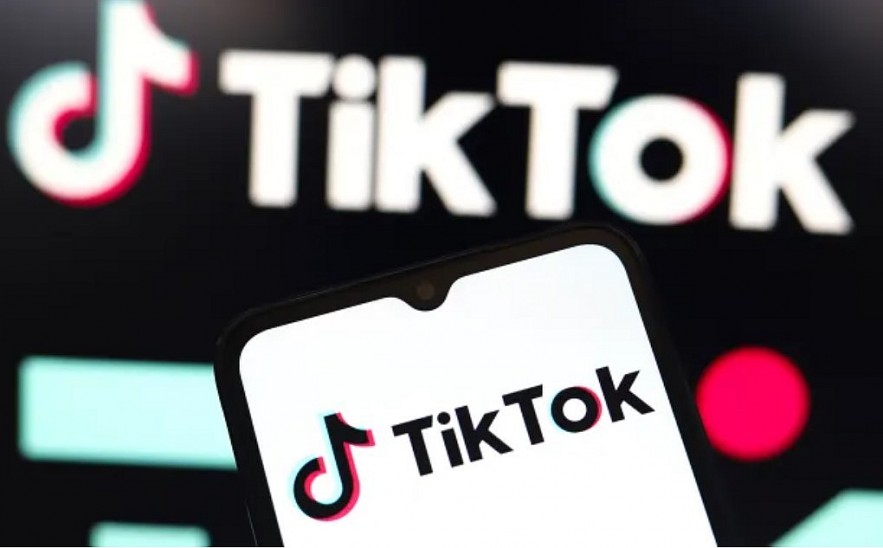The Fate of TikTok in the U.S.: A New Deal Ahead of the September 17 Deadline
 What Is ‘Sardine Girl Summer’? Inside the Viral, Unfiltered Trend of Summer 2025 What Is ‘Sardine Girl Summer’? Inside the Viral, Unfiltered Trend of Summer 2025 |
 Who Is Guy Christensen? TikTok Influencer Praises DC Shooter, Calls Israeli Diplomats 'War Criminals Who Is Guy Christensen? TikTok Influencer Praises DC Shooter, Calls Israeli Diplomats 'War Criminals |
As of mid‑September 2025, TikTok is on the brink of a pivot. Under pressure from U.S. regulators and law, the Chinese‑owned social media app faced a looming ban unless it changed ownership. Now, new developments suggest a deal may have been reached — one that could allow TikTok to continue operating in the United States under U.S.‑controlled ownership.
 |
| Is TikTok getting banned in the U.S |
Background: What’s At Stake
-
Law & Legislative Pressure: The U.S. passed the Protecting Americans from Foreign Adversary Controlled Applications Act (PAFACA) in April 2024. Under this law, apps owned or controlled by “foreign adversaries” must divest or be banned. ByteDance (TikTok’s parent) is directly named.
-
Court Ruling: The U.S. Supreme Court upheld PAFACA in TikTok, Inc. v. Garland, confirming its constitutionality and that requiring divestment does not violate the First Amendment.
-
Deadline Extensions: Although the original divestment deadline was earlier in 2025, enforcement has been delayed multiple times. Most recently, President Trump extended the “compliance or ban” deadline to September 17, 2025.
Latest Developments: The Framework Deal
What’s New (as of Sept. 15‑16, 2025)
-
In Madrid, U.S. and Chinese officials held high‑level trade talks. Treasury Secretary Scott Bessent announced a framework deal has been reached that would allow TikTok to continue operating in the U.S., contingent on a shift toward U.S.‑controlled ownership.
-
The September 17 deadline may be briefly extended to allow finalization of the terms of this deal.
-
President Donald Trump publicly hinted that the deal is in place. On his platform Truth Social, he posted that a deal was reached on a “certain company that young people … very much wanted to save,” clearly referencing TikTok. He also said he would speak with Chinese President Xi Jinping on Friday to finalize the agreement.
What’s Still Unclear
-
Details of Ownership Transition: Exactly how much control China (ByteDance) would give up – whether it is full divestment, majority U.S. ownership, or some other structure – has not yet been made public.
-
Algorithm & Data Access: A central issue is access to TikTok’s recommendation algorithm, data storage, and whether Chinese export or national security rules will allow ByteDance to transfer or hand over that technology.
-
Chinese Confirmation: While the U.S. has described the framework deal as agreed, there is no full public confirmation from the Chinese government with all terms laid out. A
Implications and Scenarios
Given these updates, here are possible outcomes and what each would mean:
| Possible Outcome | What it Involves | Implications for TikTok / Stakeholders |
|---|---|---|
| Full Divestment + U.S. Ownership | ByteDance sells or spins off U.S. operations, with U.S. entities gaining controlling stake; algorithm/data oversight transferred or heavily regulated. | TikTok continues operation, smoother regulatory compliance; maybe less risk of ban; some user, creator & advertiser confidence restored. |
| Partial Restructuring / Oversight | ByteDance retains some minority stake, but with strict oversight, data localization, algorithmic transparency, and U.S. board control or similar arrangements. | More complex to implement; users may see changes in how data is handled; regulatory risk reduced but not eliminated. |
| Delay / Interim Deal | Short extension beyond Sept 17 while details are finalized. Maybe some steps like U.S. control over cloud storage or architecture, but not full ownership yet. | Temporary relief; uncertainty lingers; might erode trust among advertisers or creators until fully resolved. |
| Ban Enforced | If deal fails, U.S. proceeds with ban as per PAFACA; app stores prohibited from distributing TikTok; updates blocked. | Layoffs, loss of market / revenue for TikTok; effects on creators, businesses; political fallout; possibly global supply chain or diplomatic tensions. |
Analysis: Why This Matters
-
National Security & Privacy Concerns: The U.S. government argues that ByteDance’s Chinese roots pose potential risks: user data exposure, undue foreign influence, and algorithmic manipulation. These concerns are core to PAFACA and the regulatory push.
-
Precedent for Foreign‑Owned Tech: How the U.S. handles TikTok may become a benchmark for other foreign‑adversary‑controlled apps. Ownership, algorithm transparency, export control issues — all are being tested.
-
Political-Cultural Dimensions: TikTok is hugely popular among younger Americans. A ban or poorly designed takeover might incite backlash; preserving the app in some form may help politically. Trump’s comments about “young people … wanting to save” TikTok reflect awareness of this dynamic.
-
Diplomatic & Trade Implications: This deal is part of broader trade negotiations; the U.S. has used TikTok leverage in discussions about tariffs, technology flow, export controls, and economic policy with China.
Outlook: What to Expect Next
-
Friday Meeting Trump‑Xi: President Trump and President Xi Jinping are scheduled to speak on Friday (Sept 19, 2025) to finalize the agreement. That meeting should bring clarity on outstanding issues.
-
Short Extension Likely: To allow time for final documents, legal review, and compliance mechanisms to be agreed, I expect the Sept 17 deadline will be extended modestly.
-
Regulatory Oversight: Once agreement is finalized, Congress, U.S. intelligence services, and regulatory agencies (e.g., FTC, DOJ) will likely insist on auditing, compliance benchmarks, and transparency (especially around algorithms and data governance).
-
Potential Pushback: The deal could face legal challenges, especially over constitutional issues (free speech, property etc.), plus scrutiny from Chinese regulators over export control and corporate governance issues.
Conclusion
The latest signals suggest TikTok may escape a U.S. ban — provided a deal is sealed that satisfies U.S. legal, national security, and political demands. The framework agreement reached in Madrid, coupled with President Trump’s public hint, indicates that the administration is moving toward preserving TikTok under U.S. ownership or heavy oversight. But key challenges remain: algorithm access, exact terms of ownership, export control from China, and full agreement from both sides.
For users, creators, advertisers, and regulators, the next few days (especially following the Trump‑Xi call) will be critical. If all goes well, TikTok may avoid removal from app stores or blocking, but its operational structure will likely change significantly.
Frequently Asked Questions (FAQ)
1. Is TikTok getting banned in the U.S.?
As of September 2025, TikTok is not banned. A U.S. law (PAFACA) requires ByteDance, its Chinese owner, to divest TikTok’s U.S. operations or face a ban. A framework deal has reportedly been reached between the U.S. and China to avoid the ban, with a short extension likely past the September 17 deadline.
2. What is the September 17 TikTok deadline?
This is the deadline set by President Trump’s administration for ByteDance to comply with U.S. ownership terms under PAFACA. If TikTok does not meet the divestment or restructuring terms, it could be banned from operating in the U.S. However, recent developments suggest the deadline will be extended slightly to finalize a deal.
3. Who owns TikTok right now?
TikTok is currently owned by ByteDance, a Chinese tech company headquartered in Beijing. Under the terms of the U.S. law, ByteDance must sell or restructure TikTok’s U.S. operations to comply with national security standards.
4. Will TikTok still be available in U.S. app stores?
Yes — for now. TikTok remains available on iOS and Android app stores in the U.S. The app would only be removed if the U.S. enforces the ban due to failed compliance. Given the recent deal in progress, continued availability is likely in the short term.
5. Why does the U.S. want to ban TikTok?
The U.S. government cites national security concerns — including fears that user data could be accessed by the Chinese government and that TikTok’s algorithm could be used for manipulation or surveillance. These risks led to the creation of PAFACA and the divestment mandate.
6. What is PAFACA?
PAFACA stands for the Protecting Americans from Foreign Adversary Controlled Applications Act, a 2024 U.S. law targeting apps owned or controlled by foreign adversaries. It specifically names ByteDance and TikTok, requiring divestment or risk of a ban.
7. Will TikTok change after the deal?
Most likely, yes. If the deal goes through, TikTok may:
-
Have new U.S. majority ownership
-
Store data only in U.S. jurisdictions
-
Submit to regular government audits
-
Possibly alter how its algorithm is governed or deployed
However, core functionality and user experience may remain intact.
8. What happens if the deal falls through?
If ByteDance and the U.S. cannot finalize a deal by the deadline (or a short extension), TikTok could be:
-
Banned from U.S. app stores
-
Blocked from receiving updates
-
Removed from cloud hosting
-
Potentially shut down in the U.S.
Legal and diplomatic consequences could follow.
9. Can TikTok users or creators do anything?
Not directly. The fate of TikTok is being negotiated at the government and corporate level. However, users and creators can:
-
Back up their content
-
Follow updates from TikTok and government sources
-
Be prepared for potential shifts to alternative platforms if needed























